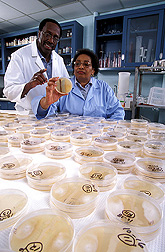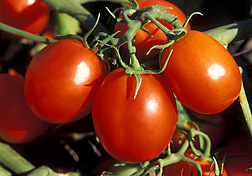
"A key bacterial compound that inhibits the growth of the plant pathogen Fusarium verticillioides has been identified by Agricultural Research Service (ARS) scientists. The compound could help protect plants, livestock and poultry from fusarium infection.
The compound is produced by Bacillus mojavensis strain RRC101. Finding better controls for F. verticillioides is important because fumonisin mycotoxins—especially fumonisin B1—are toxic to livestock and poultry." Sharon Durham
Source: Source: USDA (ARS) http://www.ars.usda.gov



